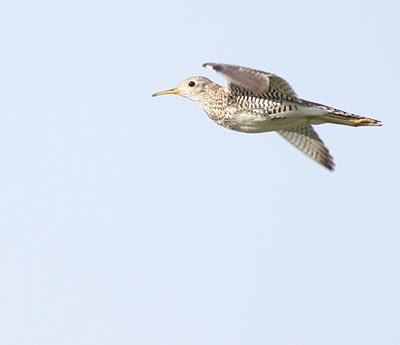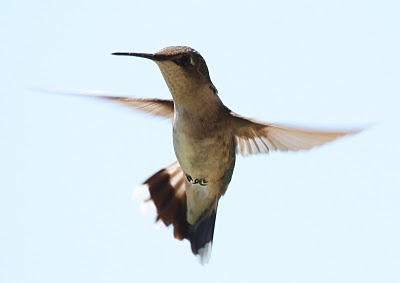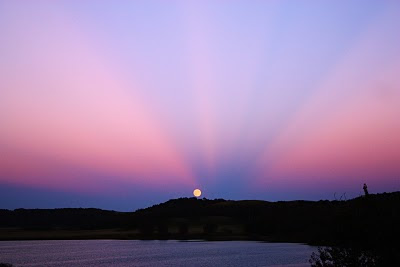
View of Vaseaux Lake and McIntyre Bluff
On a family vacation to the Okanagan in August, I had a bit of the blind luck that sometimes enters the life of a naturalist. My wife Karen and daughter Maia and I were reading quietly on a stony beach along Okanagan Lake one morning and a bird flew in at our feet. Thinking more about vineyards and wineries than birds at the time, I was actually reading Roadside Nature Tours through the Okanagan
A Guide to British Columbia's Wine Country, a book by one of Canada's most prominent bird experts, Dick Cannings. The bird that made me look up from my book was feeding on the beach only six feet away from me and seemed not to notice or mind us there. "Hello, what are you doing here?" As the words came out I realized I was looking at a Surfbird, a species that belongs on the Pacific Coast and not the interior of B.C. I called Dick and though he put out the alert to others, it was not seen again. Luckily it stayed long enough for me to run and get the camera, proving a first record for the species in the Okanagan.


A couple of days later Dick invited us to visit the Vaseaux Lake Bird Observtory in the southern Okanagan next to one of the most picturesque bodies of water in the valley.
Here is Doug Brown (right), who runs the station, watching Allan, a volunteer, remove a bird from the mist net.

Just as Karen, Maia and I arrived, Doug and Allan came back from making their rounds to the nets. After entering the screen tent where they do the banding Doug opened one of his little cotton sacks (they always remind me of Rusty the Rooster's home on The Friendly Giant), and pulled out this lovely Yellow Breasted Chat.

The B.C. population of chats is listed as Threatened based on work done by Dick. We felt fortunate to see one in the hand--and to watch a skilled bander like Doug work so rapidly and efficiently with the birds.
The hat I received earlier in the summer from B.C.'s Grasslands Conservation Council got hung up on one of the support lines for a mist net.

While we watched the bird banding work, Dick was out in the valley bottom running a regular bird survey he does for the station. When he finished, we followed him to a grassland and talus-slope spot where we could listen for Canyon Wrens.
In this photo we are watching for a wren that Dick has managed to call in with his very effective imitation of its descending whistle.

Next to the place where we were straining to see the wren, was this pictograph on a large boulder.

Later Dick toured us through the valley and to White and Green lakes where we saw a flock of Western Bluebirds, some Pygmy Nuthatches and Cassins Finches. Along the way, Dick told me about the the proposed national park for the grasslands of the Okanagan and Similkameen valleys. He sits on an advisory committee for the proposed park, and has been working hard with other B.C. conservationists for many years, making the case for the park and helping landowners and First Nations leaders see the value in having it established. I asked him about the "No National Park" signs we had seen all over the south Okanagan. To us it seemed like there was a strong core of organized opposition.
"No," Dick said,"It's basically just a couple of people who are pressuring landowners to put up the signs. We've done polls that show a strong majority support for the park." Dick is confident that the obstacles remaining in the way of an Okanagan-Similkameen park will fall in coming years, protecting a good chunk of this rare grassland and its many endangered species from the ferocious development pressures the region faces.

Here is what the Parks Canada site has to say about the area set aside for a park under a memorandum of understanding signed between Canada and B.C: "Desert-like ecosystems with sagebrush and cactus are found on valley bottoms, changing at higher elevations to dry forests of ponderosa pine and Douglas-fir, or sub-alpine forest and alpine tundra. This area is one of the most interesting and ecologically diverse parts of Canada, with many native plants and animals, and natural communities found nowhere else in Canada."
[For more information on the park, Okanagan birds and Dick's ventures as a low-carbon, cycling birder, be sure to take a look at his wonderful blog, "Birds and Books".]































